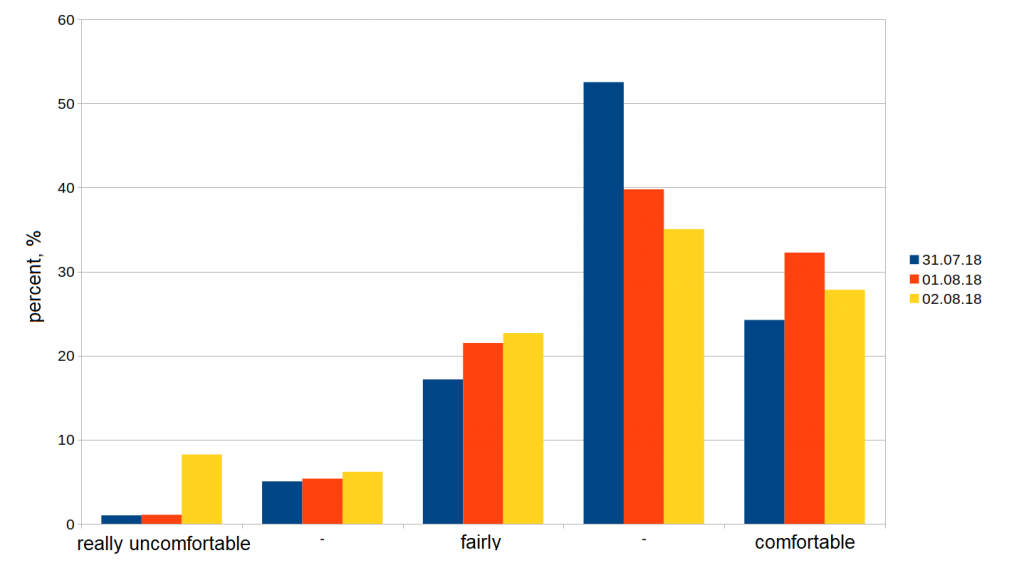Finnish Meteorological Institute experts conducted a survey about the thermal perception of children during their participation in a summer camp week in 2018. The study showed that children could express themselves in thermal comfort surveys.
ACHIM DREBS, REIJA RUUHELA, ANTTI MÄKELÄ
Finnish Meteorological Institute
Thermal sensation studies with children are scarce due to difficulties to interview children and find suitable thermal conditions to carry out the survey (Rupp et al., 2015). As a part of the Horizon 2020 iSCAPE project (Improving the Smart Control of Air Pollution in Europe) (iSCAPE–project, 2018) living lab activities were embedded into summer activities aimed for children within the Science Camp of the Finnish Science Centre Heureka (HEUREKA, 2018).
A total of about 700 children taking part in the Camp were organized to groups based on their age; from 7 to 13 and from 14 to 16 years, respectively. For the younger children, there was every day of the week up to four different activities related to various fields of science, including also meteorology and climate. The FMI iSCAPE team assisted in designing this activity.
Furthermore, for the children at the age from 13 to 16 years, a unique program was organized in three weeks during the Camp.
During the summer camp, there was a period (31.7.–2.8.2018) with high daily air temperature, fair wind and clear sky conditions. This period was suitable to survey the children’s thermal sensations on consecutive days to find out if there are changes in thermal sensation between the hot days.
The structure of the survey was simple; only one question was asked: How did you experience the outdoor air temperature this morning on your way to the Camp? The answer was given by touching on a poll pad to a 5-step scale from 1 (red smiley = really uncomfortable) to 5 (green smiley = very comfortable). Up to 99 children participated in the survey. The percentage of collected answers lay between 85 and 90%. The results are presented in Fig. 1.
The share of uncomfortable thermal sensation increased during the study period together with increasing temperature. The change from day one to day three was statistically significant with p-value = 0.04 (Chi-squared-test).
Acknowledgement: The iSCAPE project has received funding from the European Community’s H2020 Programme under Grant Agreement No. 689954.
References
Finnish Science Centre HEUREKA, 2018. Available at: https://www.heureka.fi
iSCAPE–project, 2018: Improving the Smart Control of Air Pollution in Europe. Available at: https://www.iscapeproject.eu
Rupp, R.F., et al., 2015: A review of human thermal comfort in the built environment. Energy and Buildings [Electronic journal], 105, 178–205.
HOW TO CITE THIS ARTICLE:
Drebs A., Ruuhela R., Mäkelä A., 2019: Thermal sensation studies with children at the Heureka Summer Science Camp, FMI’s Climate Bulletin: Research Letters, 1(1), 7, DOI: 10.35614/ISSN-2341-6408-IK-2019-05-RL
CITATION INFORMATION:
Authors: Achim Drebs, Reija Ruuhela, Antti Mäkelä
Received: March 28, 2019
Accepted: May 14, 2019
First online: June 19, 2019
Published: June 20, 2019
Journal: FMI’s Climate Bulletin: Research Letters
Volume: 1
Issue: 1
Page: 7
DOI: 10.35614/ISSN-2341-6408-IK-2019-05-RL
Header image: Eija Vallinheimo



